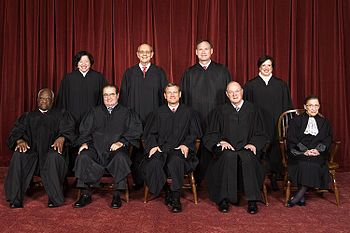
State legislators in Tennessee have made it official: Sex toys and graphic promotions of sexual activity are not welcome in public schools.
With the signing into law of SB 3310 by Gov. Bill Haslam, public schools that teach sex education classes must emphasize abstinence, and teachers are barred from promoting "gateway sexual activity" that encourages students to sexually experiment.
"We are very pleased with the passage of the Tennessee law, and we think that it could and should serve as a model for other states to follow," said Valerie Huber, executive director of the National Abstinence Education Association.
Tennessee only mandates sex education in school districts where the teen pregnancy rate exceeds a certain rate. But before the new law, some districts brought in speakers and curriculum that included explicit depictions of sexual conduct.
The Family Action Council of Tennessee (FACTN) documented a 2010 incident at Hillsboro High School in Nashville when a speaker with Nashville CARES, an AIDS awareness and education program, taught a sex education class at the school. The speaker used anatomically correct models to show students how to perform a graphic sex act. FACTN also noted that in some schools, Planned Parenthood presented sexual education curriculum that included links to its national website.
Huber added that some organizations claim they teach abstinence, but their curriculum goes in a decidedly different direction.
"It's asking students to creatively think of what kind of sexual activities they can still engage in and not get pregnant," she said. "Well, that's not how you and I define abstinence."
The new law, signed in May, specifically prohibits promoting sexual experimentation and forbids materials that "condone, encourage or promote student sexual activity among unmarried students," as well as "devices manufactured specifically for sexual stimulation." It also gives parents the option to sue if a teacher violates the law's guidelines.
While the law prohibits distribution of contraceptives on school property, it allows "medically-accurate" information about contraception to be provided as long as it is consistent with the law's other provisions and emphasizes that only abstinence eliminates all risk.
Tennessee's efforts take their place among a larger national struggle over sex education, one that Huber argues is filled with misinformation. She says the NAEA sought to counter that misinformation with a two-part study called "Considerations for Protecting Teen Health" released on June 19. It looks at both so-called comprehensive" sex education (CSE) programs and abstinence-centered sexual risk avoidance (SRA) sex education.
"[W]e think that there needed to be a definitive study that would give us the facts rather than the sound bites, and we think that this study does so in a rather exhaustive manner," Huber said.
Part one of the study examines CSE programs, exploring their curricula, examining what it calls the "debatable" research metrics being used to promote them, and their current promotion by the Obama administration.
"The CSE approach has been the mainstay of sex education for decades, receiving the lion's share of all funding even though research results for this approach are dismal, particularly in the school setting," the study states.
A key argument of the study is that the CSE approach focuses only on minimizing the physical risks associated with sexual activity, ignoring the non-physical consequences of sexual activity for many teens. The study cites research that found most teens who had sex reported at least one negative effect, with girls especially saying they felt bad about themselves or felt used, and that teen sex leads to more than twice the risk of divorce later in life. It also points to research that shows teens who engage in casual sex have a higher risk of lower grades, problems in school and are less likely to go to college.
Huber adds that depression and suicide rates "skyrocket" among teens who add sex to their relationships, and sexually active teens are more likely to abuse alcohol and use drugs.
"If they think that the worst thing they have to worry about is a pregnancy or even an STD, then they aren't receiving all of the information," she said.
The study also found that such "comprehensive" programs include very little information about abstinence, with most skill-building activities centering on condom skills. It cites curriculum that suggests teens can be "abstinent" while still engaging in certain sexual activities, which exposes teens to STDs that can be transmitted through skin-to-skin contact.
CSE curricula also exaggerate the effectiveness of condoms in preventing pregnancy and STDs, according to the study, with one curriculum encouraging teachers to withhold information on condom failure rates.
The NAEA study tackles the research behind CSE, arguing that among other weaknesses, it uses flawed metrics, is over-generalized and suffers from conflict of interest, since much of the research was led and published by researchers who were either employed by the curriculum publishing companies or wrote the curriculum themselves.
Part two of the study seeks to show that abstinence-centered sexual risk avoidance education is the best approach. Starting from the premise that all non-marital teen sexual activity is high-risk and should be avoided, SRA education is designed to prevent all negative consequences by preventing sexual activity in the first place.
"Rather than encouraging teens to experiment with gateway sexual behaviors that could compromise their health and their ability to avoid sexual intercourse, SRA programs encourage teens to avoid all risk by focusing on non-sexual activities in their dating relationships," the study says.
SRA programs follow a holistic approach that goes beyond addressing the physical consequences of sex, the study says, examining the reasons why teens have sex in the first place. Effective SRA programs typically include skill-building exercises that focus on topics including goal-setting, skills to resist sexual pressure, the benefits of waiting until marriage for sex, and medically accurate information on how contraceptives such as condoms may reduce the physical risk from sexual activity but don't eliminate them. SRA programs avoid normalizing or promoting teen sexual behavior.
The study cites research that shows SRA programs are effective at reducing teen sexual activity, saying that 25 peer-reviewed studies demonstrated "significant and positive behavioral change" among participants.
Ideology plays a large role in federal government rejection of the SRA approach, the study argues, citing a 2008 House Oversight and Government Reform Committee hearing on the effectiveness of abstinence education programs. Of the seven witnesses assembled, five said that even if SRA was shown to be as effective as or more effective than "comprehensive" sex education, they would still oppose funding for the SRA approach.
But the message of abstinence is resonating with teens and parents, the study argues, citing data that shows fewer teens are having sexual contact and that parents support programs that place primary emphasis on abstinence.
Huber urges abstinence education supporters to take action in correcting a 16-to-1 funding disparity that favors "comprehensive" sex education programs.
"Obviously we are at a dangerous spot for sex education policy right now," she said. "The current administration has virtually eliminated all the abstinence education that they could."
She points to a potential fix in the Abstinence Education Reallocation Act introduced into Congress. The bill authorizes grants for SRA programs and clarifies what an authentic SRA program teaches.
"We have currently about 70 co-sponsors," Huber said, "but we need a whole lot more, so that we can see this change that is not only what parents want but is in the best health interest of our teens."
--30--
John Evans could serve as national model
State legislators in Tennessee have made it official: Sex toys and graphic promotions of sexual activity are not welcome in public schools.
With the signing into law of SB 3310 by Gov. Bill Haslam, public schools that teach sex education classes must emphasize abstinence, and teachers are barred from promoting "gateway sexual activity" that encourages students to sexually experiment.
"We are very pleased with the passage of the Tennessee law, and we think that it could and should serve as a model for other states to follow," said Valerie Huber, executive director of the National Abstinence Education Association.
Tennessee only mandates sex education in school districts where the teen pregnancy rate exceeds a certain rate. But before the new law, some districts brought in speakers and curriculum that included explicit depictions of sexual conduct.
The Family Action Council of Tennessee (FACTN) documented a 2010 incident at Hillsboro High School in Nashville when a speaker with Nashville CARES, an AIDS awareness and education program, taught a sex education class at the school. The speaker used anatomically correct models to show students how to perform a graphic sex act. FACTN also noted that in some schools, Planned Parenthood presented sexual education curriculum that included links to its national website.
Huber added that some organizations claim they teach abstinence, but their curriculum goes in a decidedly different direction.
"It's asking students to creatively think of what kind of sexual activities they can still engage in and not get pregnant," she said. "Well, that's not how you and I define abstinence."
The new law, signed in May, specifically prohibits promoting sexual experimentation and forbids materials that "condone, encourage or promote student sexual activity among unmarried students," as well as "devices manufactured specifically for sexual stimulation." It also gives parents the option to sue if a teacher violates the law's guidelines.
While the law prohibits distribution of contraceptives on school property, it allows "medically-accurate" information about contraception to be provided as long as it is consistent with the law's other provisions and emphasizes that only abstinence eliminates all risk.
Tennessee's efforts take their place among a larger national struggle over sex education, one that Huber argues is filled with misinformation. She says the NAEA sought to counter that misinformation with a two-part study called "Considerations for Protecting Teen Health" released on June 19. It looks at both so-called comprehensive" sex education (CSE) programs and abstinence-centered sexual risk avoidance (SRA) sex education.
"[W]e think that there needed to be a definitive study that would give us the facts rather than the sound bites, and we think that this study does so in a rather exhaustive manner," Huber said.
Part one of the study examines CSE programs, exploring their curricula, examining what it calls the "debatable" research metrics being used to promote them, and their current promotion by the Obama administration.
"The CSE approach has been the mainstay of sex education for decades, receiving the lion's share of all funding even though research results for this approach are dismal, particularly in the school setting," the study states.
A key argument of the study is that the CSE approach focuses only on minimizing the physical risks associated with sexual activity, ignoring the non-physical consequences of sexual activity for many teens. The study cites research that found most teens who had sex reported at least one negative effect, with girls especially saying they felt bad about themselves or felt used, and that teen sex leads to more than twice the risk of divorce later in life. It also points to research that shows teens who engage in casual sex have a higher risk of lower grades, problems in school and are less likely to go to college.
Huber adds that depression and suicide rates "skyrocket" among teens who add sex to their relationships, and sexually active teens are more likely to abuse alcohol and use drugs.
"If they think that the worst thing they have to worry about is a pregnancy or even an STD, then they aren't receiving all of the information," she said.
The study also found that such "comprehensive" programs include very little information about abstinence, with most skill-building activities centering on condom skills. It cites curriculum that suggests teens can be "abstinent" while still engaging in certain sexual activities, which exposes teens to STDs that can be transmitted through skin-to-skin contact.
CSE curricula also exaggerate the effectiveness of condoms in preventing pregnancy and STDs, according to the study, with one curriculum encouraging teachers to withhold information on condom failure rates.
The NAEA study tackles the research behind CSE, arguing that among other weaknesses, it uses flawed metrics, is over-generalized and suffers from conflict of interest, since much of the research was led and published by researchers who were either employed by the curriculum publishing companies or wrote the curriculum themselves.
Part two of the study seeks to show that abstinence-centered sexual risk avoidance education is the best approach. Starting from the premise that all non-marital teen sexual activity is high-risk and should be avoided, SRA education is designed to prevent all negative consequences by preventing sexual activity in the first place.
"Rather than encouraging teens to experiment with gateway sexual behaviors that could compromise their health and their ability to avoid sexual intercourse, SRA programs encourage teens to avoid all risk by focusing on non-sexual activities in their dating relationships," the study says.
SRA programs follow a holistic approach that goes beyond addressing the physical consequences of sex, the study says, examining the reasons why teens have sex in the first place. Effective SRA programs typically include skill-building exercises that focus on topics including goal-setting, skills to resist sexual pressure, the benefits of waiting until marriage for sex, and medically accurate information on how contraceptives such as condoms may reduce the physical risk from sexual activity but don't eliminate them. SRA programs avoid normalizing or promoting teen sexual behavior.
The study cites research that shows SRA programs are effective at reducing teen sexual activity, saying that 25 peer-reviewed studies demonstrated "significant and positive behavioral change" among participants.
Ideology plays a large role in federal government rejection of the SRA approach, the study argues, citing a 2008 House Oversight and Government Reform Committee hearing on the effectiveness of abstinence education programs. Of the seven witnesses assembled, five said that even if SRA was shown to be as effective as or more effective than "comprehensive" sex education, they would still oppose funding for the SRA approach.
But the message of abstinence is resonating with teens and parents, the study argues, citing data that shows fewer teens are having sexual contact and that parents support programs that place primary emphasis on abstinence.
Huber urges abstinence education supporters to take action in correcting a 16-to-1 funding disparity that favors "comprehensive" sex education programs.
"Obviously we are at a dangerous spot for sex education policy right now," she said. "The current administration has virtually eliminated all the abstinence education that they could."
She points to a potential fix in the Abstinence Education Reallocation Act introduced into Congress. The bill authorizes grants for SRA programs and clarifies what an authentic SRA program teaches.
"We have currently about 70 co-sponsors," Huber said, "but we need a whole lot more, so that we can see this change that is not only what parents want but is in the best health interest of our teens."
Contact: John Evans
Source: Baptist Press






















